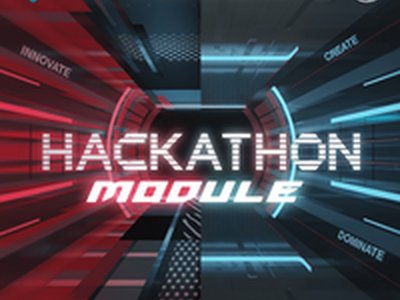

AI For Social Impact How can you leverage AI to address a pressing social or environmental challenge in yourcommunity or globally? Guidelines:
Define the Problem: Identify a specific challenge (e.g., climate change, education access,healthcare, disaster response, or inclusivity).
Build a Solution: Develop an AI-based prototype or proof of concept that addresses theidentified problem. This could involve:- Predictive modeling- Natural language processing- Computer vision- Agentic AI- Data analysis and insights
Focus on Feasibility: Ensure your solution is practical, scalable, and ethical.
Demonstrate Impact: Clearly showcase how your solution can create a positive impact,with a focus on measurable outcomes.
Web Development (WebDev) Design and develop a fully functional and visually appealing web application. The web applicationshould demonstrate modern design principles and technical proficiency in both front-end andback-end development.
Requirements
Technology Stack:- Participants are free to choose their preferred technology stack.- Ensure the application is responsive and works seamlessly across devices (e.g.,desktop, tablet, mobile for web apps, or Android/iOS for mobile apps).
Key Features:- A visually engaging landing page.- An Events Page that dynamically displays event details.- An About Page providing information about the organization or concept.- A Projects Page that includes individual sections for specific projects, such as:-> DataCamp: Description and details.-> AI Influencer: Features and objectives.-> Chatbot: Use cases and development overview.
Theme and Design:- Embrace a modern, tech-oriented design. A futuristic and dark theme is encouragedbut not mandatory.- Ensure intuitive navigation and user-friendly interfaces.
Functionality:- Dynamically render event and project details.- Optimize performance for fast loading and smooth interactions.- Follow accessibility best practices to ensure usability for all users.
Additional Guidelines- Maintain a version control system (e.g., GitHub).- Document the setup, deployment process, and any additional configurations.- Ensure the application adheres to modern web standards and best practices
Assets and ReferencesAll supporting materials, including the Software Requirements Specification (SRS) document and relevant assets, can be accessed using the following link.
Ops for Innovation How can you design and implement a scalable, secure, and efficient DevOps pipeline to streamlinesoftware delivery and ensure reliability in a real-world scenario? Guidelines
Identify a Scenario: Choose a real-world use case, such as:- Automating CI/CD for a microservices-based application.- Building an infrastructure-as-code (IaC) solution for cloud resource management.- Implementing observability and monitoring for a distributed system.
Build a Solution: Develop a DevOps pipeline or toolchain that addresses the identifiedscenario. Consider integrating:- Version control, CI/CD pipelines, and automated testing.- Containerization and orchestration (e.g., Docker, Kubernetes).- Security measures (e.g., DevSecOps practices).- Monitoring and logging tools (e.g., Prometheus, Grafana).
Focus on Efficiency: Optimize for scalability, fault tolerance, and resource utilization.
Demonstrate Usability: Ensure your solution is easy to implement and adaptable todiƯerent environments.
GIK Institute Clock Tower, Main Gate Garden, Topi, Swabi, Khyber Pakhtunkhwa 23640, Pakistan
ACM Student Chapter
$0